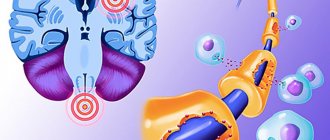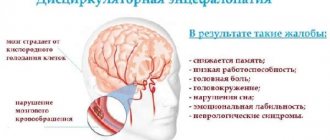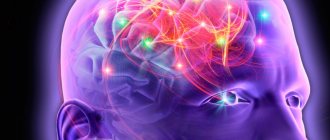Micropsia is one of the forms of distortion of visual perception of objects in the external environment and one’s own body, in which everything around seems smaller than it really is. Sometimes this disorder is called “Alice through the Looking Glass syndrome.” This disorder is not often encountered in neurological and psychiatric practice, but it can significantly limit a person’s daily activity. Moreover, he is worried not only about the micropsia itself, which can appear suddenly and disappear just as abruptly, but he is afraid of a second attack. Medical doctors will conduct a thorough examination of the patient, find out the cause of the disorder, prescribe appropriate treatment or refer you to a specialized specialist.
Macro and micro - two sides of the same violation
With micropsia, the patient sees surrounding objects as exaggeratedly small, as if they were toys—much smaller than their natural size.
The second form, more rare, but complementing the clinical picture of the disease, is macropsia. With it, the opposite clinical picture is observed, when a person perceives objects, and even his own arms and legs, to be enlarged in size. During an attack, surrounding things grow right before our eyes.
Both forms of pathology are often combined and completely disorientate the patient, affecting visual perception and touch. AIWS often causes auditory and olfactory hallucinations. As a rule, this is a borderline state with the development of epilepsy and schizophrenia.
All pathological changes that the patient observes with Lilliputian vision and its opposite form do not concern the organs of vision, but occur at the mental level. affecting only cerebral analyzers. A sick psyche imposes “disfigured” sensations and visions on a person. The brain, hijacked by a neurological disorder, receives correct information from the eyes but interprets it incorrectly.
This mental state usually manifests itself in the form of an attack and often happens unexpectedly.
The patient can see a tiny table where there is a huge cup of milk, along the edge of which a giant fly is moving. Neither micropsia nor its opposite form affects the visual organs, but only the cerebral analyzers.
Micropsia: general description
The visual organ system is one of the most complex structures of our body. Although its anatomical structure has been studied in sufficient detail, the neurological and physiological mechanisms of processing information perceived by the eye are still completely unknown.
Everything we see around us is projected in the form of light rays onto the retina, the back wall of the eye. The rods and cones located in it transform them into electrical impulses, which are transmitted to the fibers of the optic nerve.
Interesting fact! The optic nerve contains about 1 million fibers, each connecting to approximately 140–150 rods and cones.
From the retina, the impulse enters the brain, or more precisely, to the visual cortex, which in humans (as, by the way, in other mammals) is located in the occipital region. Brain neurons “process” the received signals, and as a result, we perceive the surrounding reality as a holistic picture, and act in accordance with what we see.
With micropsia, a person does not perceive the real size of the objects around him. Unlike other vision pathologies (farsightedness, myopia, etc.), illusions and hallucinations are not distorted in their outlines, shape, and the general characteristics of the perceived information do not change (for example, with hallucinosis, it seems to the patient that things are coming to life, someone is in a closet, under the table, etc.).
Alice syndrome is not fun, it's dangerous
Through the Looking Glass syndrome, as a form of AIWS syndrome, may be:
- a separate disease;
- one of the symptoms of developing migraine;
- a sign of drug addiction;
- serious mental pathologies, epilepsy, brain tumors.
This mental disorder is dangerous when there are problems with the perception of the environment, when a person cannot distinguish reality from the world transformed by his psyche.
In addition to visual and auditory distortions, there is a loss of orientation in space and time. The lack of real guidelines aggravates the pathology, destroying the patient’s psyche.
Unable to assess the dimensions of objects, their distance, the patient is exposed to danger while on the street, where he loses support under his feet and is not aware of the approach of transport, other people, holes and any obstacles. He is not able to analyze the situation, assess the situation and take action, as a healthy person would do.
Forms and stages of the syndrome
The most common manifestations of the syndrome are metamorphopsia, micropsia and macropsia.
Metamorphopsia is a person’s distorted perception of the image of his own body and its individual parts.
Micropsia is a perception disorder in which all objects in the surrounding reality are perceived in a greatly reduced form.
Macropsia is a perception disorder in which all objects in the surrounding reality are perceived as extremely large.
Both of these forms of Todd syndrome have several stages:
- Initial stage. The occurrence of headaches, increased anxiety. The intensity of these symptoms increases rapidly.
- Main stage. A pronounced manifestation of the disease, complex symptoms of distorted perception.
- The final stage. Reducing the intensity of the syndrome. Fatigue, apathy, drowsiness.
Interesting Facts
Alice in Wonderland syndrome - an abnormal mental disorder received its magical name more than 60 years ago in honor of the strange beautiful fairy tale by Lewis Carroll, created by the author’s imagination back in 1865.
A “bewitched” person begins to see everything, as if through a crooked prism: the big - shrinks, the tiny - swells to incredible sizes.
In addition, the distances to objects also change. They can grow enormously - and then your own palm stretches out, touching the opposite wall, the window looks like a tiny luminous point somewhere at the end of the tunnel.
And a cockroach running in the distance turns into a monster, causing heart spasms with horror. The body reacts with the release of adrenaline, as an unhealthy psyche dictates.
Lewis Carroll
In general, and in particular, the picture observed by a patient with micropsia is similar to that described by Lewis Carroll. In the fairy tale, after a magical meal, a girl either shrank or grew in relation to the objects and living beings around her.
Psychiatrists believe that the writer, apparently, also suffered from this disease and recorded his own symptoms, which manifested themselves in migraine with aura (severe pain spreading to half of the head, which develops after previous neurological symptoms - “aura”).
And therefore, for some, the fairy tale about the girl Alice in a Wonderful Land causes not tenderness, but rejection with its phantasmagoria, characteristic of a sick psyche.
Typically, if micropsia is caused by a severe mental disorder, it occurs in childhood from 5 years of age, when the child begins to analyze and evaluate the world around him, and up to 13–14 with the gradual establishment of hormonal changes in puberty.
Dwarf hallucinations more often appear at dusk, a strange time of semi-darkness and blurred silhouettes, when the brain begins to experience a lack of visual signals about the exact size of surrounding objects. In some cases, micropsia is observed in adults.
What to do with micropsia or macropsia?
Micropsia (macropsia) is treated purely individually. If the cause of the disease is discovered, therapy is aimed at eliminating it (at the same time, accompanying symptoms are also relieved). So, for migraines, painkillers and sedatives are prescribed, for epilepsy, relaxants and anticonvulsants are prescribed.
To lengthen periods of remission, patients are recommended to take a course of classes with a psychologist or psychotherapist. Such activities help reduce the severity of fears and relieve the depression that accompanies them.
The support of family and loved ones also plays a huge role in the treatment of the syndrome. Sick people should not be left alone with the problems that have befallen them, especially if the disease developed in childhood.
Sessions of hypnosis and cognitive behavioral therapy can enhance the positive effect of treatment.
Drug treatment
Drug treatment is used to reduce the severity of disturbances in the perception of reality. In the vast majority of cases, micropsia (macropsia) is treated with the following drugs:
- sedatives;
- antidepressants;
- benzodiazepines;
- nootropics.
About the reasons
The exact causes of micropsia are being clarified. It is believed that there is a high probability of a connection with genetics and heredity. Doctors pay attention to several reasons causing the development of AIWS.
It has been found that micropsia can be a separate neurological disorder or one of its symptoms, as well as a concomitant pathology with certain mental disorders.
These include the following diseases:
- Migraine . The most common cause of Lilliputian vision. It manifests itself in attacks of intense pain in one half of the head. Scary tale symptoms usually precede the attack, resulting in hallucinations and metamorphopsia, a condition in which there is a false perception of the color, shape, size and movement of real objects.
- Epilepsy . A mental disorder that is expressed by sudden, very strong convulsions with loss of consciousness. The disease can also cause strange visions and auditory hallucinations.
- Schizophrenia . A severe mental disorder that manifests itself in a variety of forms and is associated with disruption of the processes of thinking, perception, and emotions.
Sometimes the causes of micropsia can be:
- Mononucleosis . An acute infection, the development of which is provoked by the pathogenic Epstein-Barr virus. Leads to damage to the lymphatic system and disruption of the functions of the higher cerebral parts.
- Neoplasms and tissue damage in the crown area . Tumors of any origin can put pressure on certain areas of the cerebral cortex, causing disturbances in the thought process and unrealistic, bizarre visions.
- Exposure to certain substances taken by a person, for example: hallucinogenic drugs (Morphine, cough suppressant Dextromethorphan with a morphine-like component); psychedelics (LSD, alkaloid psilocybin); marijuana and other types of drugs. All signs disappear after metabolic products are removed from the blood, but significantly weaken the psyche.
If a person’s syndrome manifests itself briefly, in episodes, disappearing on its own, this is a good sign, meaning that, most likely, there are no serious pathologies. But medical practice has recorded case histories when the condition lasts for several years.
Alice in Wonderland Symptoms
The symptoms of this disease have both diagnostic and therapeutic implications that differ significantly from those in schizophrenia spectrum disorders and other hallucinatory syndromes. Thus, over the past 60 years, the symptoms of this mental disorder have grown to include 42 visual symptoms and 16 somatic and other non-visual symptoms. What these symptoms have in common with each other is that they represent distortions of sensory perception rather than hallucinations or illusions.
Hallucinations are perceptions experienced in the absence of a corresponding stimulus from the outside world, such as a voice heard in complete silence or seeing an image of a cat that is not there. Illusions have a source in the external world, albeit one that is (often fleetingly) misinterpreted or misinterpreted. Thus, music can be heard in a walking, passing stream, and a curtain moving in the wind can be mistaken for an intruder.
Like illusions, distortions are based on sensory impressions, but they are characterized by highly idiosyncratic changes in very specific aspects of the sensory input pattern. For example, all straight lines may be perceived as wavy (dysmorphopsia), all vertical lines as horizontal (plagiopsia), all stationary objects as moving (kinetopsia), and the eyes of people or animals may be perceived as unnaturally large (prosopometamorphopsia).
But at the same time, micropsia (when various objects are perceived by the patient as smaller in size than they actually are) and macropsia (the same as micropsia, only vice versa) were described most often in the literature (in 58.6% and 45.0 % of all patients, respectively), which may indicate that they are the most common types of distortions, but also that they are the most well-known and therefore the most studied.
The duration of symptoms of this disease is usually short. Episodes may occur several times during the day and last less than 24 hours. However, in some cases the disease can be chronic and symptoms can persist for several years or even a lifetime.
An important detail is also that after visual fixation on an object, visual distortions (metamorphopsia) can sometimes occur at certain intervals: from several seconds to minutes.
After this time delay, objects are perceived in a distorted way, but during the delay the process of perception is not disrupted. In the psychiatric literature, this phenomenon is explained as a sign of cerebral asthenopia (that is, unusual fatigue of the perceptual system).
How does the syndrome manifest?
Alice in the Wonderful World syndrome manifests itself in the form of sudden attacks that can last a few seconds or minutes, like a strange dream, up to several hours and even weeks when the person's mental state is under great stress.
An unpleasant property of the syndrome is that it overtakes the patient even if his eyes are closed. This is yet another additional confirmation that the disease has nothing to do with vision, but is only an unsuccessful fruit of a mental-cerebral “symbiosis.”
The attack is usually accompanied by the following unpleasant conditions:
- loss of orientation in space;
- a feeling of gaps in time, which either speeds up or slows down;
- fear, depression;
- agnosia, or the inability to recognize people and objects, although there are no impairments in the visual or auditory systems;
- impaired ability to follow a sequence of actions.
As a rule, the main symptoms are accompanied by symptoms of a panic attack:
- pressing, squeezing pain in the head;
- increased, strong heartbeat (tachycardia), pulsation in the temples;
- a sharp (over several minutes) rise in pressure;
- arrhythmic phenomena (pauses in myocardial contractions), causing an additional feeling of fear of death;
- rapid breathing, yawning and sighing, indicating hyperventilation;
- feeling of suffocation;
- trembling of the fingers, a tingling sensation in the tips up to a strong burning sensation (a consequence of the powerful release of adrenaline by the adrenal glands);
- intestinal and stomach cramps, diarrhea.
There may be other components of a panic attack, which is dangerous mainly due to a sharp “jump” in blood pressure.
Diagnosis and treatment
Alice syndrome is an extremely rare disorder. According to statistics, today in the United States it manifests itself in no more than 300 patients throughout the country.
The diagnosis is made based on the patient's complaints and descriptions of symptoms, since in this condition laboratory diagnostic methods are not able to provide any data for analysis. For the syndrome, as a separate temporary condition, no special treatment has yet been developed.
Therefore, it is necessary to conduct a full examination and determine the real, often hidden, cause of this condition.
In order to distinguish this disease from possible other severe disorders with a similar clinical picture, as well as to identify the main cause of the pathology, encephalography, computed tomography, and lumbar puncture to examine the cerebrospinal fluid are prescribed.
If the underlying disorder is an undetected disease, then after treatment has been carried out, eliminating the underlying pathology, Lilliputian vision, as a symptom, disappears on its own.
For migraines with previous micropsia, drugs that relieve headaches, sedatives and strong analgesics are prescribed to reduce the severity and duration of migraines.
Recommended:
- minimize the impact on the psyche of stressful, irritating situations; practice long night sleep (preferably up to 10 hours, but not less than 8);
- change your diet and minimize foods that have the ability to provoke a migraine attack: strong alcohol, citrus fruits, black coffee and chocolate, cheese.










